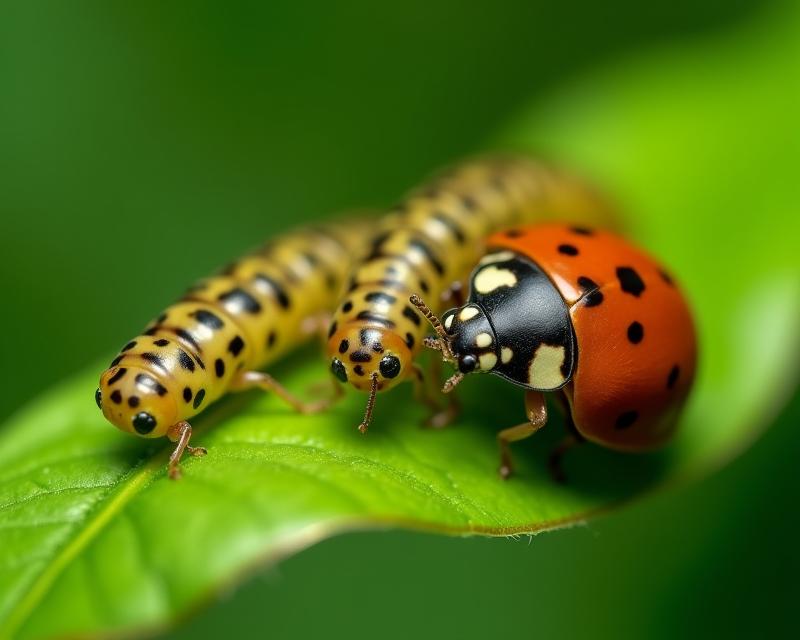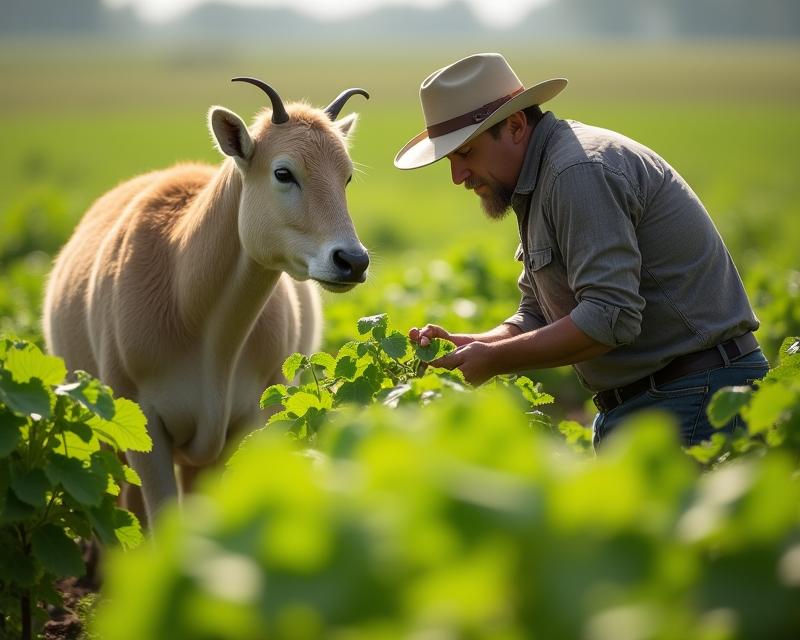Bug Buddies: Natural Pest Control with Ladybugs & Lacewings
Publish in Sustainable Farming el 06/07/2025 17:49
Bug Buddies: Natural Pest Control with Ladybugs & Lacewings
Are you tired of relying solely on chemical pesticides to manage pests on your farm or garden? There's a fascinating and effective alternative: biological control! This involves using natural enemies of pests to keep their populations in check. And today, we're shining a spotlight on two of the most helpful bug buddies around: ladybugs and lacewings. These little creatures are natural predators, and they can be powerful allies in your fight for a healthy, productive harvest.

Ladybugs: The Aphid Avengers
Ladybugs, also known as lady beetles, are voracious eaters of aphids. Aphids are tiny, sap-sucking insects that can wreak havoc on plants, causing stunted growth and spreading diseases. A single ladybug can consume hundreds of aphids in its lifetime! They are particularly fond of soft-bodied insects, making them a fantastic natural control for a wide range of pests, including scale insects, mealybugs, and mites. You can attract ladybugs to your farm by planting flowers like dill, fennel, and yarrow, which provide them with nectar and pollen. Creating a habitat with plenty of shelter, like hedgerows or undisturbed areas, is also beneficial.
Lacewings: The All-Around Predators
Lacewings are another excellent biological control option. Both the larvae and adults are predators. Lacewing larvae, often called "aphid lions," are particularly effective at consuming aphids, spider mites, and other small insects. They have a distinctive spiny appearance and a voracious appetite. Adult lacewings also feed on pests, although they also consume nectar and pollen. To encourage lacewings to visit your farm, plant flowers like Queen Anne's lace, cosmos, and sunflowers. Avoid using broad-spectrum insecticides, as these can harm beneficial insects like lacewings.
How They Work & Getting Started
The beauty of biological control is that it's a self-sustaining system. Once established, ladybugs and lacewings can help keep pest populations in check for years to come. You can purchase ladybugs and lacewing larvae from reputable biological control suppliers and release them onto your crops. It's best to release them in the evening or early morning to avoid them drying out in the sun. Remember, a healthy ecosystem is key! Providing a diverse habitat with plenty of food and shelter will support a thriving population of beneficial insects, making your farm more resilient and sustainable. Embracing these natural predators is a step towards a healthier, more balanced agricultural system.





